Writers

FRANCES BAXTER
A painter from Australia. Studied painting with Frank Hodgkinson, another Deia alumni. Moved to Deia in 1977 and married Juan Graves, son of Robert. She has returned to Australia now and continues to make art and music.
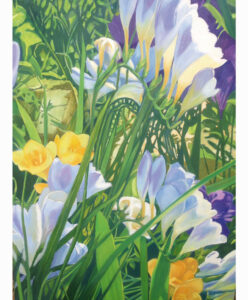
FLIS TEMPLETON
Came to Deia in 1978 with her then husband David Templeton. She continues to live on the island and paints constantly.
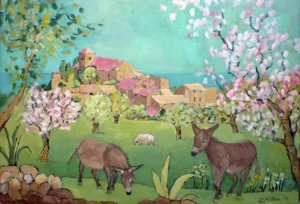
LEILA WARD
Born in 1946, has lived on the idle since 1975. She exhibits every summer in a gallery in the village.
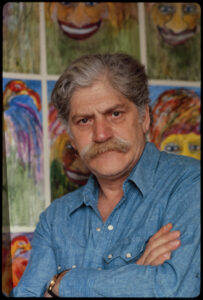
Jakov Lind
Peripatetic writer who escaped Austria as a child, hid in Holland in the war and described his experiences in a series of books.
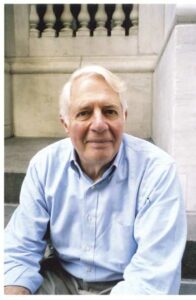
LAWRENCE MALKIN
American writer and correspondent who spent a year in Deia and returned every year to write.
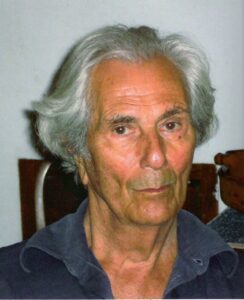
Paul Crotto
Born in 1921. Like many other US veterans (Bill Waldren, George Sheridan, Norman Yanikun) Paul came to Europe on his GI Bill to study art
In the 1960s, the village of Deià experienced a Golden Age of art, poetry, prose and music. A group of disparate and international writers, musicians and artists congregated by chance on the beautiful, savage northern coast of Mallorca and the results were remarkable. The wild environment inspired creativity and a freethinking community with Robert Graves in the vanguard. The mysterious, breathtaking beauty of the twisted mountains, combined with the hospitality of the local people, spectacular houses, cheap food and drink and a society of like-minded people made Deià ripe for renaissance. The artists came, they saw and they stayed, snug and at ease in this perfect bohemian environment. A cognac was 5 pesetas and a three-course meal 40 pesetas (less than one US dollar at the time).
“The past was misunderstood, the future was an interminable present. Sea, parties, music, dinners, sea, more parties, under the watchful eye of the full moon and stone terraces” (j.Tajes).
As long as you didn’t flirt with the local girls or get drunk and fall into the torrente then life was bliss! If you steered clear of the Guardia Civil, they steered clear of you. Most of the original Deià group are gone now. Others, drawn and held by the myth and magic of the place, continue the tradition. As long as Deià lives, the spirit of those early artists carries on, behind our conversations, amid the light and heat of summer, and in damp gatherings of chilly winter dinners.
When we, Oona Lind, daughter of writer Jakov Lind and Jackie Waldren, anthropologist, wife of artist and archaeologist Bill Waldren, thought about commemorating this artistic era we discovered that there were many more creative people working in Deià at this time than we had bargained for and we had taken on a huge challenge. We would have to organise exhibitions, readings, concerts of various character, as well as present photographs, documentaries and memoirs. It would turn out to be (probably) the largest multimedia show ever made about this town.
We looked for the perfect title that would encompass the mood of the time and we came up with some concepts that we thought would be appropriate.
Every generation has its “golden age,” and if collecting is to reunite what has been separated, then we as the collectors (with the help of a multitude of people) are bringing together what has been dispersed, and striving to recreate a time of community, creativity and sharing. Perhaps we can add a few visions of the people and creations that are part of the myth and magic of Deià.
“‘Deià‘, Robert Graves would say, ‘is a truly magical village. There is a great attraction between the sea and the mountains and a lot of iron oxide on the walls of the Teix that surround the village. That means that the village itself is polarized by electromagnetic forces that sharpen people’s sensitivities.‘“ (Claribel Allegria)
“Contrary to the popular belief that if you remember the 1960s, you weren’t there, I do remember them and I was there. I remember them because those years were my youth and some of the most powerful events, impressions, and relationships come from my time in Deià. There may be no metal in those limestone mountains but there is a form of magnetism that draws me back and holds me close.” (John de St.Jorre)
“Some people say a writer is a person who finds the words and has the courage to write what he thinks. I think a writer is someone who locks himself up with his typewriter, pens and paper and ruins his health because he believes his craft and his ideas are needed. A writer is someone who hates himself and loves the world. In short a madman of sorts.” (Jakov Lind).
“The art of ‘good painting‘ embodying that precious, indisputable ‘something‘ we call ‘fine Art‘, is ultimately the best we have to illuminate and sustain our hopes and dreams and simultaneously express our joy and our love for life.” (George Sheridan).
Marc Heine’s work was said “to convey our society’s automation and excessive consumption and the values of respect for nature and ethics; it conveys the contemplation of beautiful as an escape and as a reflection on existential problems.” (Busquets)
And now, in this updated edition of the Deià Heydays catalogue, we have added the new generation of artists that were raised in or came to this village by word of mouth or connection and who integrated into the creative zeitgeist. This creative and prodigious group has helped to keep Deia blossoming and still robustly artistic. These artists who established themselves in Deià between 1980 and 2000 now also have a place in this ever-growing compendium of 104 artists!
All of the artists included here questioned their worlds, their futures, and their pasts with curious and critical minds. As the fortunate inheritors of this tradition we hope you will enjoy these sojourns into the past that have formed the Deia we find today. As is typical with all beautiful places (St. Tropez, Cannes, San Juan des Pins), when an artist moves there because it is cheap and easy to live, others follow and the original way of life changes. There is no lack of young people in Deia who have grown-up with this musical and artistic tradition, a tradition that has dimmed with the social and economic changes that have put Deia on the route of the rich and famous. We are hoping that this catalogue will help to remind people who live here and encourage those who come in the future to support the creativity and the artists of Deia.
